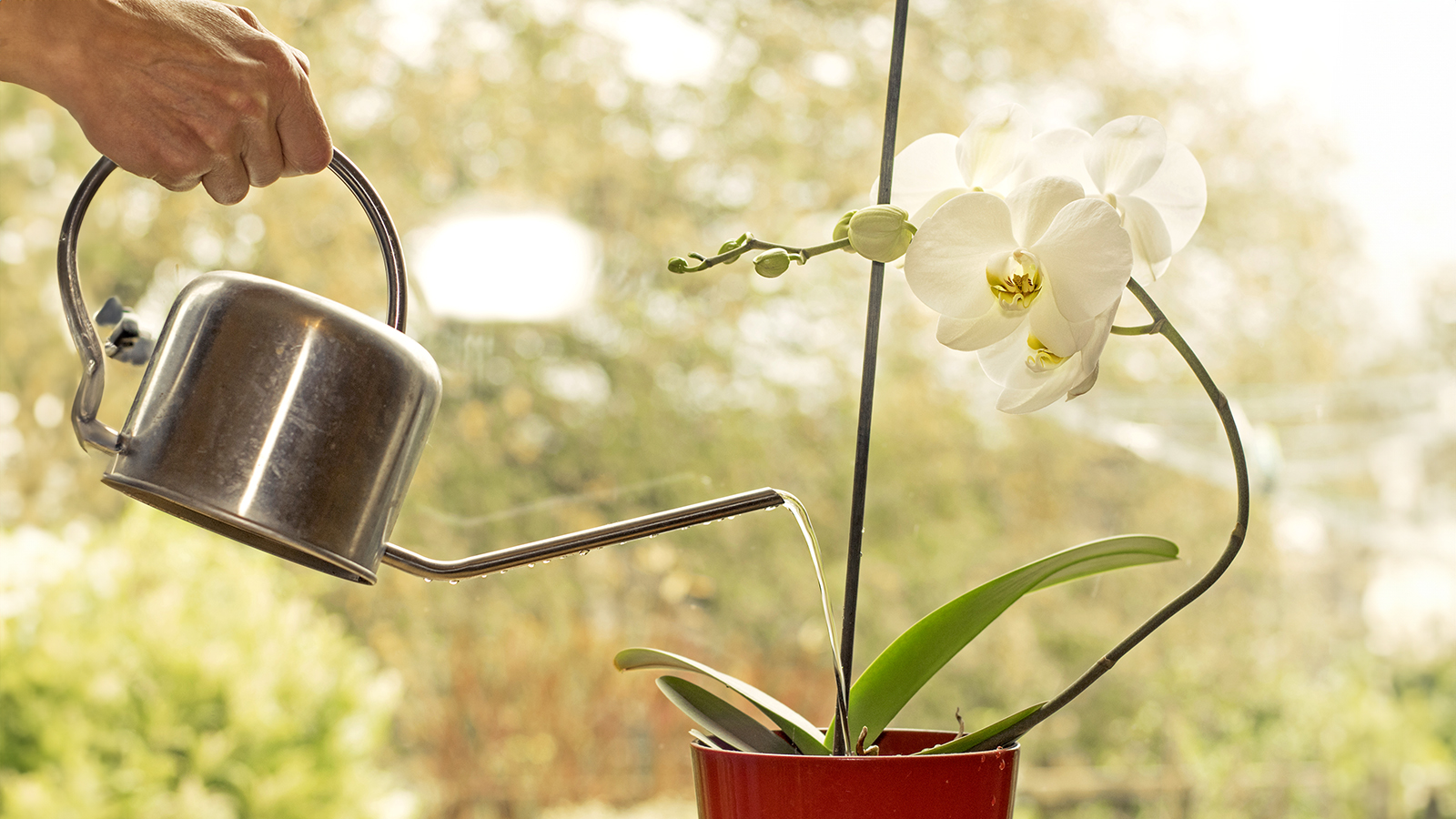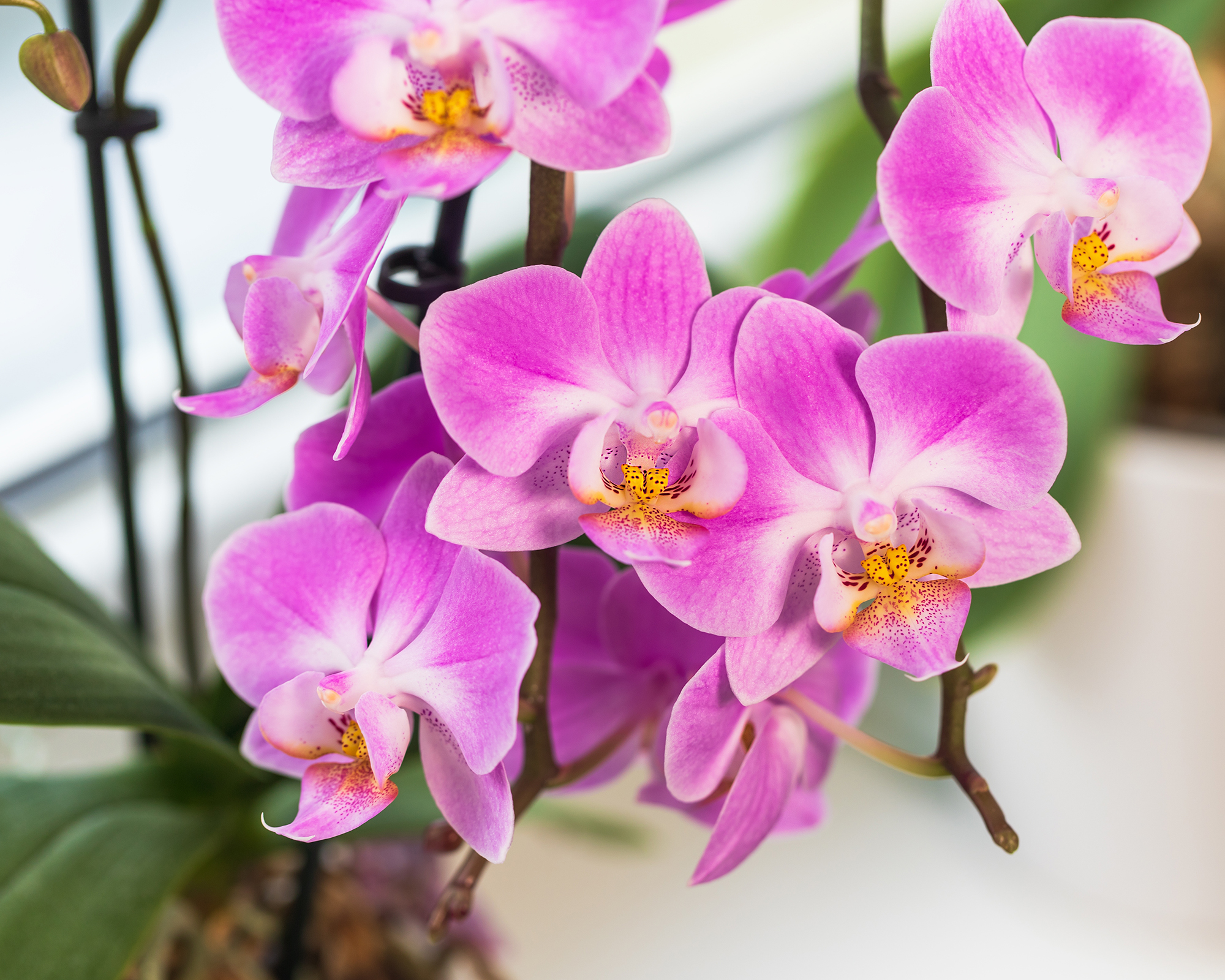Orchid Fertilizing Guide: Expert Tips For Thriving Plants And Better Blooms
Fertilizing orchids is vital for vibrant foliage and brilliant blooms. Learn how often to feed plants at different stages and get the right nutrient balance.

Orchids are beautiful, exotic plants that add elegance to any space. While they have a reputation for being finicky, they are fairly low-maintenance if grown in the right conditions and can be largely left to their own devices. But just keeping plants alive isn't enough to get an endless supply of those big, bountiful blooms – this is where orchid fertilizing comes in.
In nature, orchids derive their nutrients from their surroundings, but container-grown, indoor orchids don’t have that option. Once they have exhausted the initial energy supply provided by the potting mix, they need fertilization by other means.
Fertilizing an orchid isn’t particularly tricky, but it does go hand in hand with a good orchid care routine. Taking a responsive approach to watering orchids and providing them with optimal light, temperature, and humidity are also key to healthy plants. As long as you have these bases covered, you will find that a regular feed will make a big difference in getting an orchid to rebloom.

Best Orchid Fertilizer
Orchids require less fertilizer than most other houseplants. Indeed, too much fertilizer can inhibit flowering. The best orchid fertilizer is a water-soluble food that is designed specifically for orchids, as it will contain the ideal balance of macro and micronutrients. However, you can use an all-purpose food as long as you pay attention to its NPK (nitrogen, phosphorus, and potassium) ratio and dilute it accordingly.
Homemade orchid fertilizer is also a good option that can be made using food waste and store cupboard ingredients. It's more difficult to over-fertilize using natural methods.
Different types of orchids require broadly the same nutrients, although you should double-check the needs of unusual varieties. However, the orchid potting medium impacts the nutrient balance, and that can vary depending on the species and whether it is an epiphyte or terrestrial. Epiphytic orchids grow on trees in the wild and so are usually potted in a bark-based medium, while terrestrial orchids grow in the ground, so they prefer a finer-textured mix.
When an orchid is grown in bark, its soil contains a lower amount of nitrogen. When fertilizing, we must make up for this nitrogen shortage. Use a fertilizer with higher nitrogen levels with an NPK of 30-10-10 or 15-5-5. The higher levels of nitrogen will give the plant the level of nutrients it needs.
Sign up for the Gardening Know How newsletter today and receive a free copy of our e-book "How to Grow Delicious Tomatoes".
Orchids that are not grown in bark normally have a better balance of nutrients. A water-soluble 20-20-20 fertilizer is suitable for this kind of application.
For boosting blooms the following year, use a fertilizer with high phosphorus like 10-30-20 in the fall.

How Often to Fertilize Orchids Indoors
Orchids should be fertilized at least once a month. For best results, however, fertilizer should be diluted and applied weekly, especially during the growing season. This method is called “weakly weekly’.
In the winter, when the plant is dormant, go back to feeding once a month and use half as much orchid fertilizer.
There is no need to fertilize orchids every time you water them, as this could result in overfertilization.
How to Fertilize Orchids
Fertilize orchids at the time of watering, using tepid water. Dilute the solution as follows:
- If applying weekly, dilute the solution in tepid water to quarter or half strength, depending on the use frequency recommended on the packaging.
- If you choose to fertilize monthly during the growing season, follow the package instructions for the full-strength recommended dilution.
- When applying monthly during the dormant season, dilute to half-strength.
Water the orchid slowly, taking care not to splash any on the leaves. Flush the plant with clean water at least once a month to remove any unused fertilizer.
Signs of Overfertilization
One common mistake people make when growing orchids is overfeeding them. Too much fertilizer, or fertilizer applied too frequently, can actually cause damage. Use dilute solutions weekly during times of active growth and stop feeding during the plant's dormant period, during bud development, and immediately after repotting orchids. These are some common orchid problems to watch for that suggest you might be overfeeding your plant:
- A white crust on the edges of the pot due to salt buildup
- Leaf burn, which looks like scorched, brown tips and edges
- Damaged, dark, or shriveled roots
- Yellowed leaves
- Reduced flowering
Additionally, if you notice your orchid leaves wilting, it is probably because of too much fertilizer. This is a common problem with plants that are growing in low-light areas. Move the plant to a brighter area and apply less fertilizer or dilute it further. If this does not help, you may have a different problem. Make sure that you are not overwatering your plant and that you are not getting any water on the leaves.
More Orchid Inspiration
- Learn how to propagate orchids with 4 expert techniques to grow your plant collection.
- Browse rare houseplants, perfect planters, and stylish accessories in our Indoor Gardening Shop.
- Is your orchid looking in poor health? Bring it back to life with these 5 ways to revive an orchid
- Try mounting an orchid to create a stunning display with our expert step-by-step guide.
- Don't miss out on essential plant care advice and exclusive offers – sign up to the Gardening Know How Newsletter today.

Amy Grant has been gardening for 30 years and writing for 15. A professional chef and caterer, Amy's area of expertise is culinary gardening.
- Susan Patterson
- Melanie GriffithsEditor in Chief

